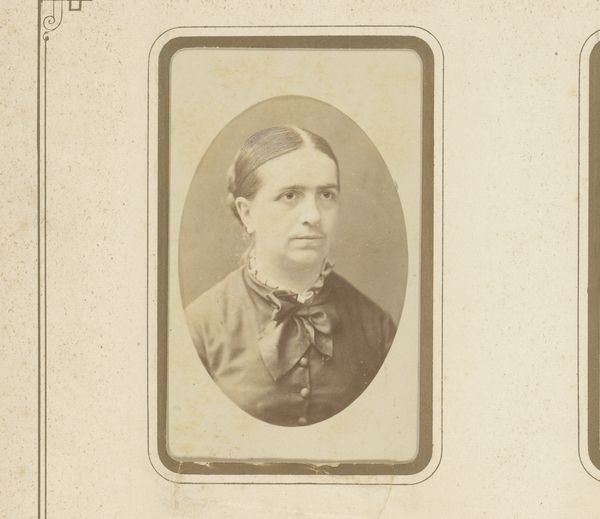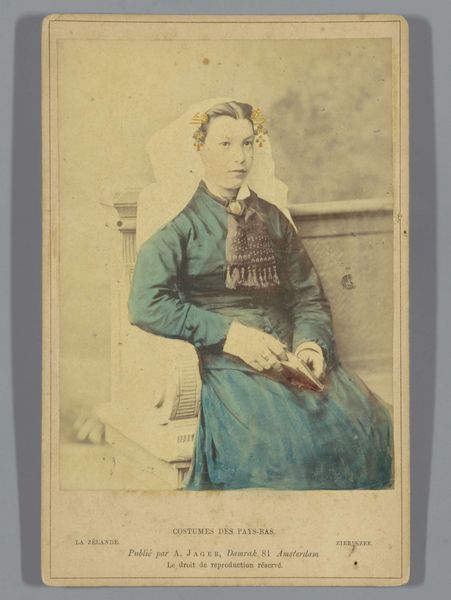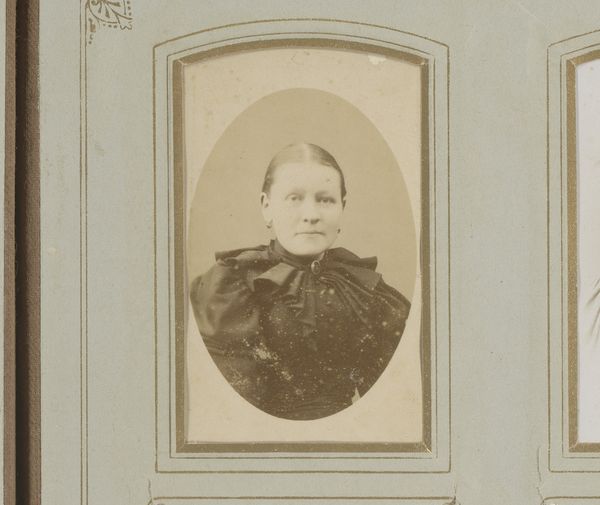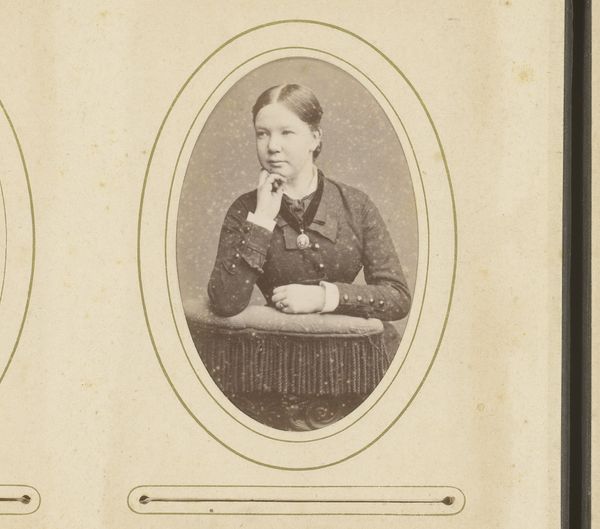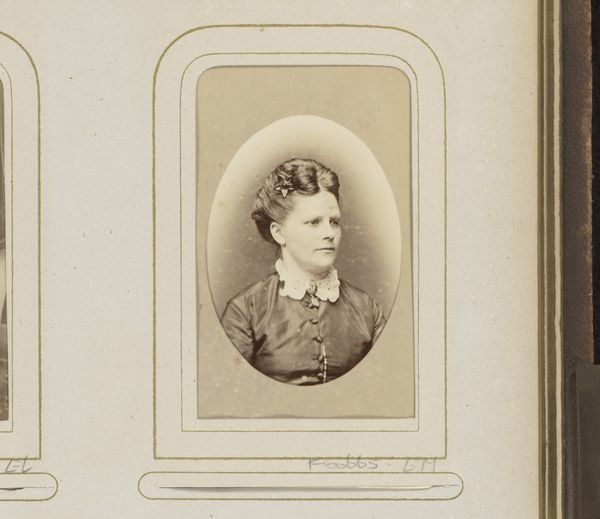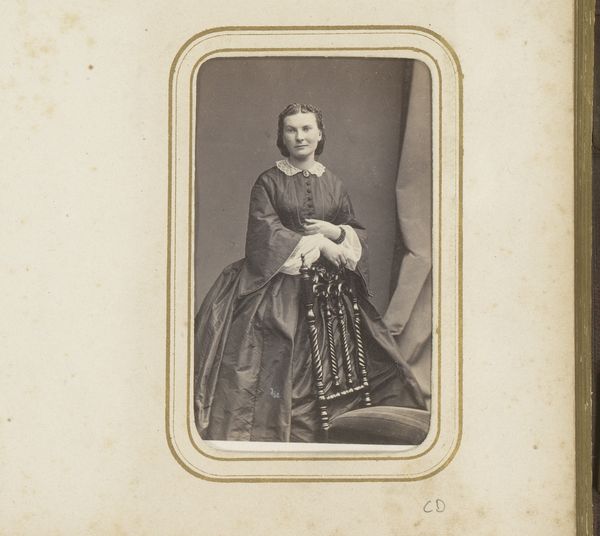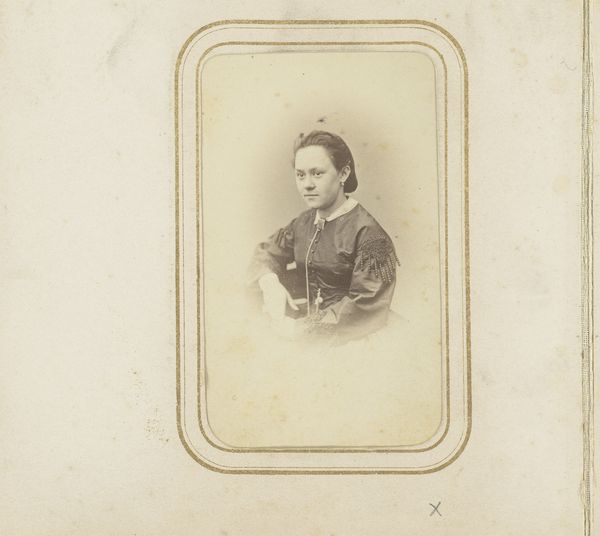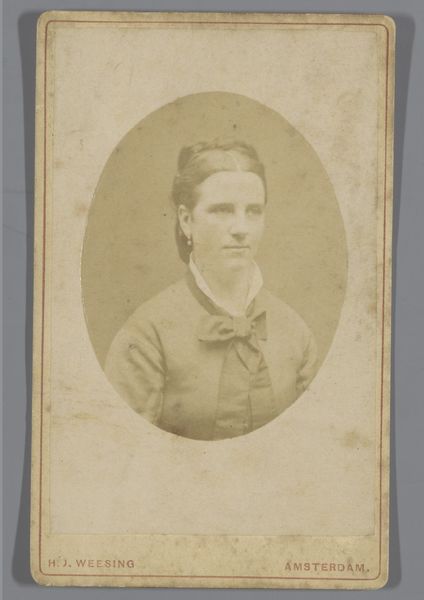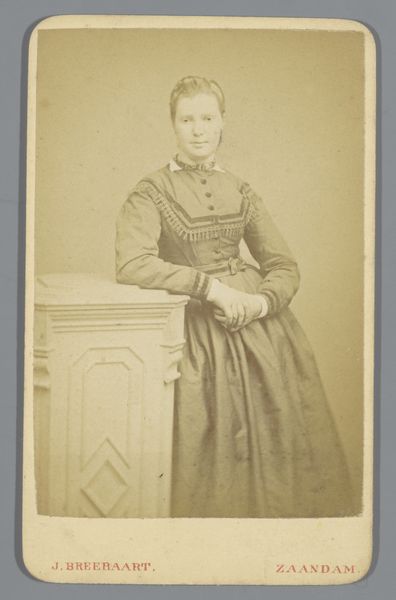
photography, gelatin-silver-print
#
portrait
#
photography
#
gelatin-silver-print
#
realism
Dimensions: height 82 mm, width 50 mm
Copyright: Rijks Museum: Open Domain
Editor: This gelatin silver print, “Portret van een zittende vrouw,” or "Portrait of a Seated Woman," by Jan George Mulder, was taken sometime between 1865 and 1887. The woman looks directly at the viewer, and her gaze feels very direct. What stands out to you in this piece? Curator: This image resonates with a very specific intersectional understanding of 19th-century societal constraints and burgeoning female identity. Note her posture, reserved yet dignified, a careful balance reflecting the limitations placed upon women during that era. The choice of clothing and minimal adornment also speaks volumes. How do you read those sartorial choices? Editor: I see them as conforming to the period, yet maybe suggesting a certain social class, even affluence? Curator: Exactly. And within that context, we can consider how class and gender intersected, both enabling and restricting individual expression. This is also a photograph, of course, a relatively new medium. How did photography influence portraiture at this time, compared to painting? Editor: Well, I imagine it made portraiture accessible to a wider segment of the population, not just the wealthy. Curator: Precisely. And what does that accessibility do to our understanding of representation, visibility, and power in the 19th century? Photography democratizes, but who gets to control the image and its circulation? The woman in the portrait projects a clear sense of self, but one filtered through societal expectations and, arguably, the photographer's lens. What do you think that tells us? Editor: It adds a whole new layer to understanding how women could present themselves, and how their image could be used, during this pivotal moment in history. Thanks for this interesting discussion. Curator: Indeed, thinking about this portrait forces us to grapple with complex questions of agency, representation, and the enduring impact of historical power structures, which in turn, allows us to perceive present ones more sharply.
Comments
No comments
Be the first to comment and join the conversation on the ultimate creative platform.


